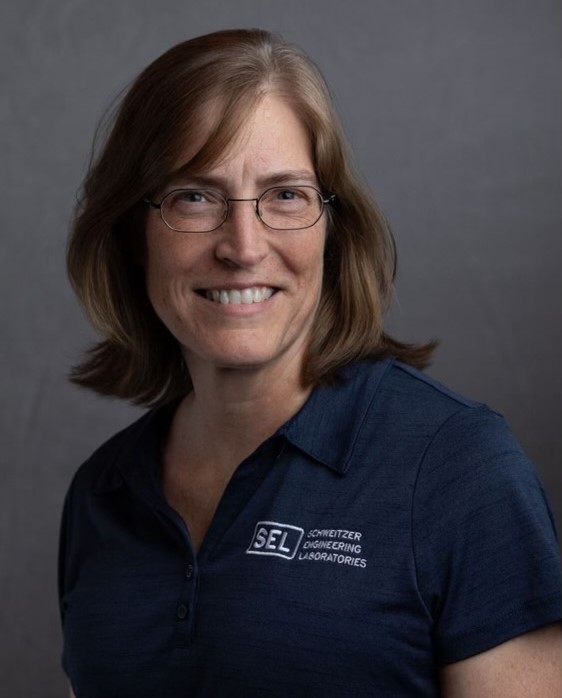Compare and Contrast AEP and Duke Analysis of Centralized Protection and Control Technologies
An IEEE Power System Relaying Committee Working Group K15 report defines a centralized protection and control (CPC) system as:
-
- A system comprised of a high-performance computing platform capable of providing protection, control, monitoring, communication and asset management functions by collecting the data those functions require using high-speed, time-synchronized measurements within a substation.
- A typical CPC system consists of a computing platform, MUs, communications networks, and a time synchronization system. A CPC refers to the computing platform used in the CPC system for executing all protection, automation, control, metering, and other auxiliary functions. A CPC system aggregates all protection and control (P&C) applications in a few devices, with the goal of improving the reliability of P&C systems while potentially reducing design costs. Having fewer devices helps with hardware replacement and firmware upgrades.
- DUKE example: Using drawings and relevant documentation, three CPC systems were designed for an existing distribution substation at Duke. The first design uses a powerful microprocessor relay capable of providing all P&C functions for the entire substation and uses copper connections between primary equipment and the CPC system. The second CPC system was designed using a P2P process bus architecture, in which multiple MUs connect to the system using direct fiberoptic cables. The third CPC system uses an IEC 61850-based process bus architecture with multiple MUs, network switches, clocks, and CPC. To eliminate a single point of failure, two CPC systems were used for each design. Following the development of the three CPC system designs, the total number of devices used for each of the designs was tabulated. Using a fault tree analysis technique, the protection scheme unavailability of each design was evaluated. Communications schemes in a traditional substation, like fast bus tripping and breaker failure, were implemented in all three CPC systems and tested on actual hardware.
- AEP Example: The overlap of NERC mandates with a relay inventory of more than 41,000 microprocessor relays is compelling AEP to look for strategies that both simplify and reduce relay systems. The strategy they are taking is twofold: 1) implement a digital secondary system (DSS) with simple merging unit distribution using fiber-optic communications to the microprocessor relays, and 2) consolidate relays into a centralized protection and control (CPC) device capable of providing complete protection for the distribution substation.
Date and Time
Location
Hosts
Registration
-
 Add Event to Calendar
Add Event to Calendar
Loading virtual attendance info...
- College Ct
- Hamilton, Ontario
- Canada L8S 4L8
- Building: A.N Bourns Science Building (ABB)
- Room Number: 163
- Click here for Map
- Contact Event Hosts
-
patrick.nkwari.n@ieee.org, tanzeelur.rehman@ieee.org
- Starts 26 September 2025 08:00 PM UTC
- Ends 20 October 2025 10:00 PM UTC
- Admission fee ?
Speakers
Amy of Schweitzer Engineering Laboratories (SEL)
Compare and Contrast AEP and Duke Analysis of Centralized Protection and Control Technologies
An IEEE Power System Relaying Committee Working Group K15 report defines a centralized protection and control (CPC) system as:
-
- A system comprised of a high-performance computing platform capable of providing protection, control, monitoring, communication and asset management functions by collecting the data those functions require using high-speed, time-synchronized measurements within a substation.
- A typical CPC system consists of a computing platform, MUs, communications networks, and a time synchronization system. A CPC refers to the computing platform used in the CPC system for executing all protection, automation, control, metering, and other auxiliary functions. A CPC system aggregates all protection and control (P&C) applications in a few devices, with the goal of improving the reliability of P&C systems while potentially reducing design costs. Having fewer devices helps with hardware replacement and firmware upgrades.
- DUKE example: Using drawings and relevant documentation, three CPC systems were designed for an existing distribution substation at Duke. The first design uses a powerful microprocessor relay capable of providing all P&C functions for the entire substation and uses copper connections between primary equipment and the CPC system. The second CPC system was designed using a P2P process bus architecture, in which multiple MUs connect to the system using direct fiberoptic cables. The third CPC system uses an IEC 61850-based process bus architecture with multiple MUs, network switches, clocks, and CPC. To eliminate a single point of failure, two CPC systems were used for each design. Following the development of the three CPC system designs, the total number of devices used for each of the designs was tabulated. Using a fault tree analysis technique, the protection scheme unavailability of each design was evaluated. Communications schemes in a traditional substation, like fast bus tripping and breaker failure, were implemented in all three CPC systems and tested on actual hardware.
- AEP Example: The overlap of NERC mandates with a relay inventory of more than 41,000 microprocessor relays is compelling AEP to look for strategies that both simplify and reduce relay systems. The strategy they are taking is twofold: 1) implement a digital secondary system (DSS) with simple merging unit distribution using fiber-optic communications to the microprocessor relays, and 2) consolidate relays into a centralized protection and control (CPC) device capable of providing complete protection for the distribution substation.
Biography:

Address:Chatham, Canada
Agenda
7:00PM - Introduction of IEEE Hamilton Section
7:15PM - Presentation
8:00PM - Q&A
8:15PM - Refreshments

